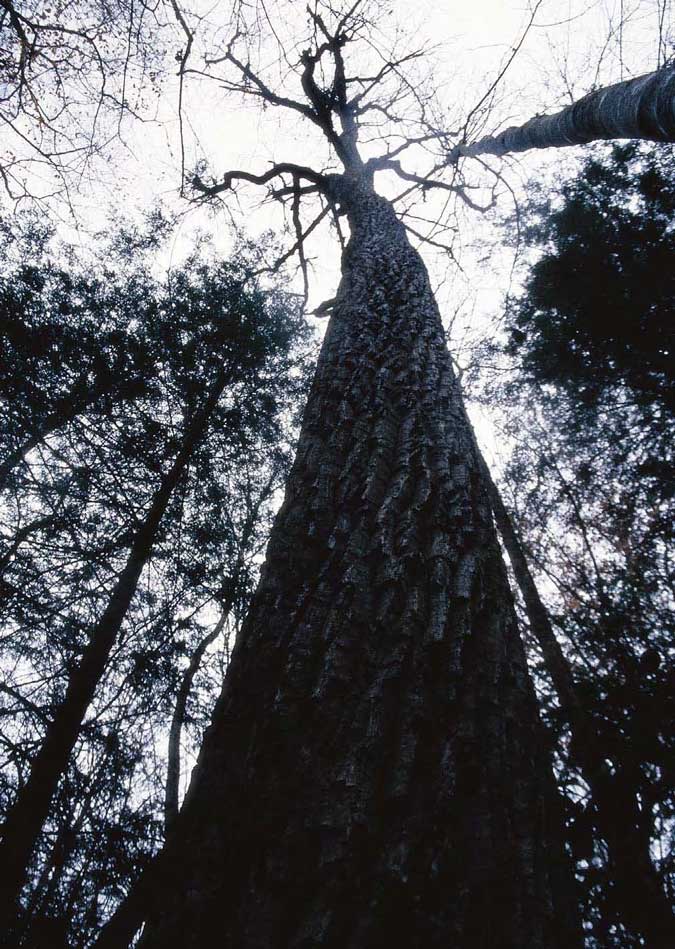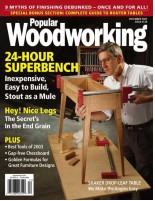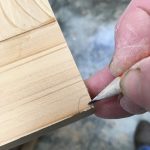We may receive a commission when you use our affiliate links. However, this does not impact our recommendations.
 Many old-growth trees are on protected land that will never be forested. But some ancient wood makes it to market. Is it worth working with? We find out.
Many old-growth trees are on protected land that will never be forested. But some ancient wood makes it to market. Is it worth working with? We find out.
by Kara Gebhardt
pages 94-97, December 2003
We crashed down a steep hill covered in ancient rhododendron thickets and the effect was complete. This forest was so old and civilization so far away that we could have been settlers forging through the Cumberland Gap. Poplars stood 120′ tall and measured 4′ in diameter. Their once young, fine-textured bark was now riven with deep grooves causing us to misidentify them in their winter attire as chestnut oaks. The trees looked wrinkled, magnificent and old. Among the poplars were ancient hemlocks and 300-year-old beech trees, which grew neck-achingly tall on Pine Mountain’s mossy, fern covered south slope.
In another era, these trees would have been cut down and used for everything from furniture and firewood to bowls and fuel. But this particular forest – Blanton Forest in eastern Kentucky – is protected. These trees will never see a table saw. But some old-growth wood (mostly recycled) does. Many people believe old-growth offers richer color, tighter grain and more strength than newer wood. Before you begin searching for some old-growth lumber, here are some important things you should know.
What is Old Growth?
There is a slew of definitions for the term “old growth,” in part because different species of trees require different definitions.
But most scientists agree on these key conditions:
• A percentage of old, large-diameter trees must be present.
• The forest must exhibit a dense, diverse canopy with trees of many different heights, standing snags (dead trees that simply refuse to fall) and a forest floor cluttered with decomposing logs.
• The soil of an old-growth forest is usually carpeted with moss, fungi and ferns, with large root balls pushing the earth apart.
• The forest must remain, for the most part, undisturbed by people. Because wood is, and always has been, integral to human life, “undisturbed by people” is what makes a virgin forest so rare.
Download the PDF below for the rest of the article.
Forbidden Forests
And please leave a comment with your favorite source(s) for reclaimed lumber.
From the December 2003 issue:

Here are some supplies and tools we find essential in our everyday work around the shop. We may receive a commission from sales referred by our links; however, we have carefully selected these products for their usefulness and quality.








